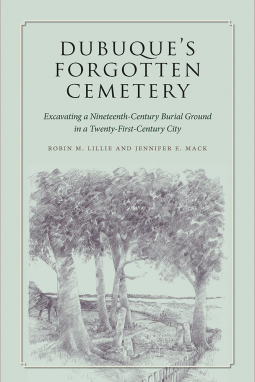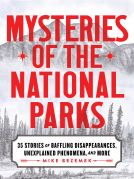
Dubuque's Forgotten Cemetery
Excavating a Nineteenth-century Burial Ground in a Twenty-first-century City
by Robin M. Lillie, Jennifer E. Mack
This title was previously available on NetGalley and is now archived.
Send NetGalley books directly to your Kindle or Kindle app
1
To read on a Kindle or Kindle app, please add kindle@netgalley.com as an approved email address to receive files in your Amazon account. Click here for step-by-step instructions.
2
Also find your Kindle email address within your Amazon account, and enter it here.
Pub Date Mar 15 2015 | Archive Date Jul 08 2015
University of Iowa Press | Iowa and the Midwest Experience
Description
The excavation fieldwork was just the beginning. Once the digging was done each summer, skeletal biologist Robin M. Lillie and archaeologist Jennifer E. Mack still faced the enormous task of teasing out life histories from fragile bones, disintegrating artifacts, and the decaying wooden coffins the families had chosen for the deceased. Poring over scant documents and sifting through old newspapers, they pieced together the story of the cemetery and its residents, a story often surprising and poignant. Weaving together science, history, and local mythology, the tale of the Third Street Cemetery provides a fascinating glimpse into Dubuque’s early years, the hardships its settlers endured, and the difficulties they did not survive.
While they worked, Lillie and Mack also grappled with the legal and ethical obligations of the living to the dead. These issues are increasingly urgent as more and more of America’s unmarked (and marked) cemeteries are removed in the name of progress. Fans of forensic crime shows and novels will find here a real-world example of what can be learned from the fragments left in time’s wake.
Advance Praise
“Given the large number of old American cemeteries that have been neglected or abandoned, Dubuque’s Forgotten Cemetery will become a model text for future archaeologists confronted with the task of locating graves and removing remains. And it is a remarkable historical story in and of itself.”—Marilyn Yalom, author, The American Resting Place: Four Hundred Years of Cemeteries and Burial Grounds
“This pivotal book unravels much of the mystery behind a forgotten historic cemetery in Iowa’s oldest community. Well researched, insightful, sensitive, and with an engaging narrative, it is a work that deserves to be read by anyone interested in history, archaeology, and the evolution of cemeteries in our society.”—Michael D. Gibson, Director, Loras College Center for Dubuque History
“The fascinating story of the cemetery a community forgot and the project that encountered it a century later and tried to understand why. In the process, a mini-social history of nineteenth-century death and dying in mid-America emerges alongside reflections on who owns the past. An Iowa must-read!”—Lynn M. Alex, author, Iowa’s Archaeological Past
Available Editions
| EDITION | Paperback |
| ISBN | 9781609383213 |
| PRICE | $27.50 (USD) |
Average rating from 7 members
Featured Reviews
 Rosemary S, Librarian
Rosemary S, Librarian
In 2007, developers broke ground for a condominium in Dubuque and discovered human remains. This was not the scene of some grisly murder, but rather the remains of a pioneer cemetery. Locals believed the cemetery had been moved over 100 years before, but it was apparent that not all the bodies had been moved. The University of Iowa was called in and the painstaking work of recovering remains and other archaeological evidence began. Here is the story of the scientist who combed through all the findings to try to piece together the lives and stories of both the early settlers and the town they lived in. A fascinating study of humanity and our beliefs
 Susan D, Reviewer
Susan D, Reviewer
What do we do when the bones of people who died from the ordinary causes of disease, accidents, and old age appear where we do not expect them to be?
Who mediates when the living disturb the dead and,
as a consequence, the dead disrupt the plans of the living? Because old cemeteries frequently stand in the way of contemporary building plans, communities across the United States must address these questions
....But beyond the legal requirements, what do landowners, descendants, current residents, and the involved specialists owe the dead? (loc 35)
The Third Street Cemetery in Dubuque, last active in the 19th century and long thought empty, was about to become a new development. But when digging began, the unforeseen occurred: human remains, evidence of past burials were found. Thus began a careful excavation and study under the Office of the State Archaeologist. The results are this book.
Along with the specifics of the findings from the graves, including the various possible health conditions uncovered, evidence of living conditions and migration, funeral customs, and some family histories, the authors were able to further reconstruct a few genealogical lines, evidence of culture changes, and some idea of life in the mid to late 19th century in Iowa. I found much of this fascinating. While the individual details were at times a bit overwhelming, their totality paints broad pictures of the time.
I'm also struck by the seriousness and reverence of those who work in this field and treat these people with the respect they are due.
While this book is likely not for everyone, I imagine you will recognise whether it might be for you. Do you wonder what they found? What sort of clothes remained, what sort of jewelry, if any? How were their teeth and did this indicate health conditions? There is a lot to learn. And did you know that those who emigrated from the British Isles tend not to have wisdom teeth erupted? Oh the things one can discover.
The authors also make the attempt to link a few graves to events in the city's past where able, which is exciting.
A copy of this book was provided by the publisher through NetGalley for the purpose of an honest review.
 jim S, Reviewer
jim S, Reviewer
Ashes to Ashes, Dust to Dust
Many Thanks to NetGalley and Univ of Iowa Press for the review copy.
This book appealed to me on many levels - first, as a taphophile and someone who generally enjoys visiting and photographing historic cemeteries; second, as someone interested in 19th century medicine - the book has great information on the types of health problems and disease that the citizens of Dubuque faced in the 1800s and the effects manifested in their remains; third, as a Catholic - the book contains and excellent chapter on the numbers, types, and origins of religious articles - rosaries, medals, etc. - found in their excavations; fourth - the coverage of the legal aspects of national and state laws covering disinterments and protections was very interesting. The authors and their teams conducted themselves in a very professional manner in their various efforts. Really interesting comparisons to other cemetery archaeological projects in terms of findings but also in terms of community involvement. Only thing that detracted from the book was some genealogical details on a few of the people they could positively identify - may be interesting for some readers but for me detracted from the otherwise wide appeal that the book had. Although I'm sure it wasn't their goal, this book would also be a great resource for fiction writers in police procedurals, historical fiction, or mystery/thriller.


















